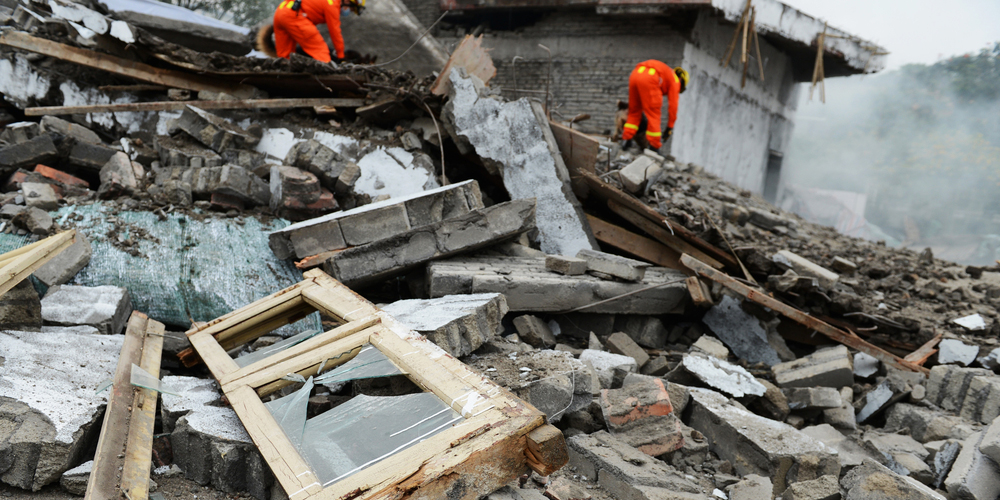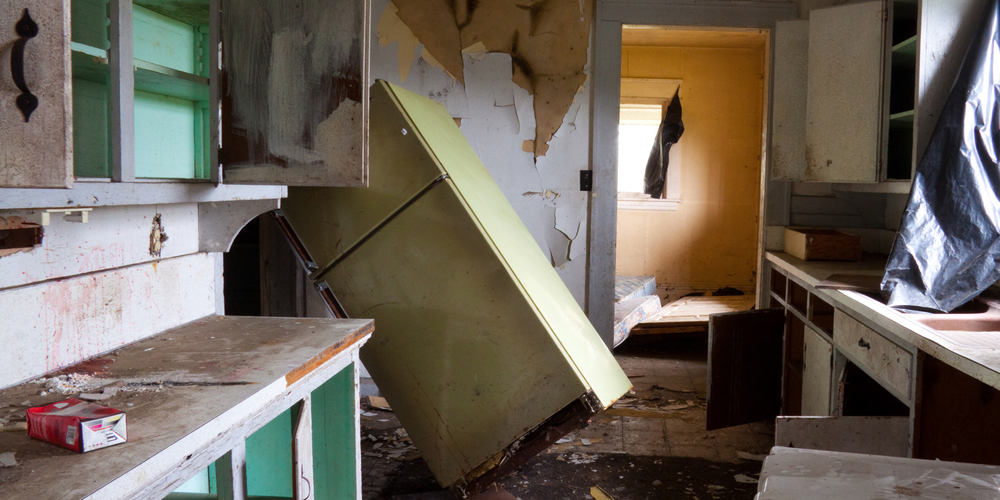Lock Blog
A resource for consumers, locksmiths, and security professionals
A resource for consumers, locksmiths, and security professionals

Since the dawn of time, there have always been threats to security that manifest in many different ways. As long as there is something that needs to be protected, it goes without saying that there is something that you are protecting it from. Why do you think padlocks have been around for such a long time? Physical security threats used to be the most prevalent threats because that was all society was accustomed too. But thanks to rapid global growth and advancement there is now a wide array of security threats that people have to take into account.
Now, I am not saying that these security threats should be ignored and dismissed. On the contrary, I believe that all the different types of security threats should be viewed rather seriously so that they can be properly safeguarded against. However, the rise of some of these other security threats has caused people to become more and more lax with the way they treat physical security threats. As a homeowner or a building manager, when was the last time you assessed your security measures? Physical security risks should be considered just as dangerous as any other security threats, and they should be afforded enough time to craft the appropriate physical security countermeasures.
I would like to take the time to explore some of the most common types of physical security threats to help give you a better understanding of the dangers they pose. At the end of the article, I will walk you through some steps that you can employ to help reduce the danger of any physical security threats you may potentially come into contact with.
It is no surprise that physical security tends to be brushed aside in this day and age. As I pointed out, this is mostly due to the amount of time that is spent trying to counter other security threats, which have cropped up and grown in popularity over the last few decades. For example, due to the increasing popularity of smart locks many people spend their time safe guarding against the unique vulnerabilities of these devices.
Physical security can be summarized as protective measures that are meant to ensure the safety of people, resources, and other important assets, from physical threats. Here are the most common type of physical security threats:
Theft and burglary are a bundled deal because of how closely they are related. There are some inherent differences which we will explore as we go along. Theft and burglary are two of the most common types of physical security threats, and they are some of the easiest to protect against. Now, do not take this the wrong way and think that I am gloating about security threat countermeasures. The last thing you want to do is to underestimate just how much burglary and theft can impede your safety at home or derail the progress of your business.
I say that theft and burglary are somewhat easy to combat because you can predict the manner in which you will be attacked to some degree of accuracy. This gives you the opportunity to set measures in place that will help limit the access a burglar or criminal might have to your home or office. However, if you do not have any measures that are meant to guard against them, then you cannot expect theft and burglary to be easy to handle.
Many residences and commercial properties have to deal with threats like this on a daily basis. However, it is a much more complex problem for commercial properties. This is because you will have to safeguard against the external and internal threats. When it comes to businesses, there is a very high likelihood that you will be exposed to the possibility of employee theft, as well as other security threats that can undermine your physical security. Taking the time to understand the vulnerabilities that you face from burglars and criminals will help you take the appropriate steps to effectively combat these threats.

If you ask the average person whether or not they think vandalism is considered a physical security threat, they will most likely conclude that it is not. This isn’t really surprising because the average person most likely thinks that graffiti is synonymous with art and art can’t be bad, right? You would be wrong to say that graffiti is not art, but you would also be wrong to think that graffiti is the extent of vandalism.
Vandalism is defined as any activity that involves the deliberate destruction, damage, or defacement of public or private property. Vandalism is often glorified in the media, but the truth is that in many ways it violates some of the physical security measures that people have worked hard to put in place. Not only does it destroy some of these physical measures, but it also takes a toll on many of the resources that required hefty investments of time and money.
Imagine if someone egged your home just after you had completed a rather expensive remodeling process, or if someone spray painted something offense across the front door of your office. These are not just harmless acts committed by teenagers or somewhat troubled individuals. They are crimes that threaten your physical security and the well being that you have strived to achieve.
In many ways, vandalism is often linked to property damage and this is one of the things that robust physical security measures is meant to guard against. With the proper measures in place, the risk of property damage decreases ten-fold. There are times where vandalism might be used to deliver a message, as a political medium or as an art form, but it is always important to be aware property is being damaged in the process. And this makes it a unique threat to physical security. The key to defeating vandalism (especially on private property) rests in having really strong perimeter security, which we will discuss later on.

Acts of terror are easily identifiable as physical security threats, much more than any of the other measures that might be listed. It is a physical security threat that transcends offices and homes and it is something that even countries have to contend with. This is mostly because acts of terror are brazen and are often widely publicized. The thing about terrorism is the fact that it is able to pervade several different facets of physical security and compromise each of these on an almost equal level. This means that acts of terror are a threat to the physical security of your company, your home and to some aspects of your personal security.
The threat of terrorism is one that every company and household should take seriously, but it is often overlooked by many because they believe an act of terror will never hit them close to home. It might hit a region of your country, but you never think it will be on your street or in your neighborhood. This might be true but the worst thing you can do is believe that you are exempt from this occurrence. You should still take the time to prepare to combat it, should the need ever arise.
Unlike many of the other threats that we have discussed and will discuss, it is much harder to combat terrorism on a small scale, but there are measures that you can implement that will increase the likelihood of survival for those around you. Many of these measures are put in place by the government and other organizations to help prevent the likelihood that a terrorist attack will occur.
This does not mean that homeowners and businesses are off the hook when it comes to physical security threats and terrorism. There are still preventative measures that can be put in place to ensure that the lives of your family and employees are not put at any further risk. Some of the best ways to do this involve setting up safety protocols and measures that are tailored to dealing with the fallout of terrorist attacks.

It used to be that natural disasters were very hard to plan for because it was difficult to predict when one would strike, but we haven’t had to live in the dark ages for quite some time now. In this modern age, companies and homeowners usually have a few days notice before any major natural disaster hits (with certain exclusions). But even then, there is still a degree of unpredictability that they will have to contend with.
There are a broad scope of natural disasters that people will have to deal with at some point in time and these disasters range from earthquakes, floods, wildfires, etc. Keep in mind that some of these disasters can also be man made, namely floods and fires. Not every flood or fire is going to be as a result of a natural disaster. The loss of resources and damage to property can end up being very costly by the time it is all said and done. This tends to take a very huge toll on physical security measures, and it is one of the harshest physical security threats that any organization or individual will have to deal with at any time.
One of the best ways to combat and mitigate the danger and effects of a natural disaster is to invest in equipment that helps you stay alert. This equipment usually includes sensors and alarms that are meant to keep people aware and alert.

Assault is a rather complicated physical security threat. I say this because it can often be an amalgamation of many of some of the other security threats we discussed above. Assault should always be taken seriously as a physical security threat, and you should always take it into account so that you know how to counter it.
The thing about assault is that it usually stems from people that you have had some form of interaction with at some point in time, no matter how little. Assaults can stem from interactions with friends, neighbors, significant others, or even disgruntled co-workers. The past interaction that you have had gives you an upper hand because it gives you the opportunity to plan and counter any physical security threats. If you notice any behavior that is out of the ordinary or threatening, you should consult with authorities or take steps to boost the physical security measures around you.
I never like to leave people hanging, so of course I am going to end this by brushing over some physical security tips that will help you negate the effects of any security threats. Here are some handy physical security tips to help bolster your security:
Security threats and physical security threats are a part of life, but this doesn’t mean you have to constantly live in fear of them. I hope that taking the time to walk through some of the most common types of physical security threats has helped make you more aware and has helped you understand what might be needed to combat them. If you have any questions, make sure you leave a comment below and we will address any concerns you might have over physical security threats.
Category: Crime, Safety & Security